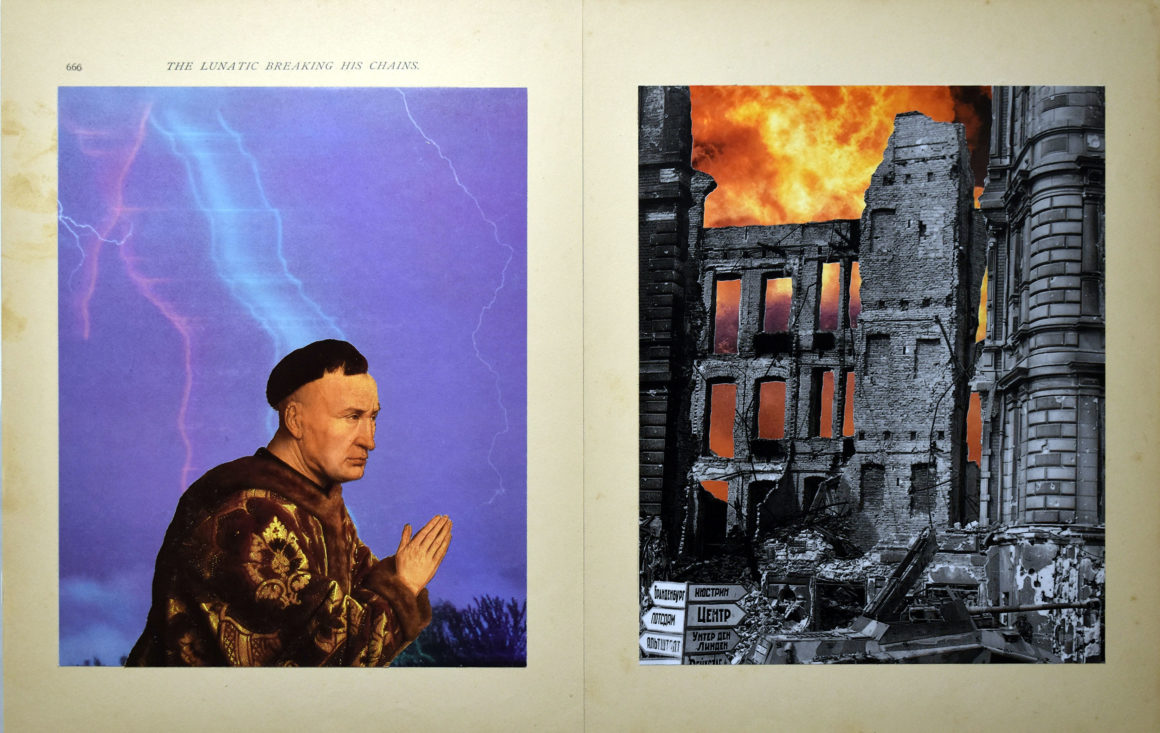Toward A New Political Art
— by Paul Forte
Everyone is political in his or her own way — Thomas Piketty
Thousands of artworks are reviewed every day by museum directors, curators, and staff at public and private institutions. Most of the work that passes through their hands, usually in the form of digital files and other forms of representation, is nowadays often judged to be insufficiently edgy, provocative, or socially relevant, all characteristics considered to be desirable from a market standpoint. Given how closely public and private institutions that exhibit art are aligned with market forces, one might assume that art that seems to have little or no market appeal would be the primary factor in its being passed over by those mounting and promoting exhibitions. But this situation cannot be due entirely to the influence of art markets. Curatorial nay-sayers unwilling or unable to consider art that doesn’t meet their expectations often act on the belief that the work in question is “old hat,” or fails to exhibit the requisite imaginative thrill, emotional punch, formal decorum, or is not sufficiently engaged with social issues. Very often these and other criticisms are driven by narrow agendas and an insular curatorial culture that in the final analysis often panders to the worst aspects of consumerism. In this way, many directors and curators at major museums and galleries, as well as non-profit venues and other institutions, behave much like their counterparts in the commercial gallery system. The exceptions to this are, unfortunately, few and far between, and where there are differing views on what art would best serve the interests of the art-viewing public, the professionals holding these views often have little power or influence to change agendas and/or curatorial practices. Those curators and others who take note of, or at least, give the benefit of doubt to artwork that is beyond their comfort zones, are more likely those who can exercise an open mind when it comes to art that fails to meet their expectations or personal tastes, including art clearly independent of trends and styles that often advance careers and reputations. Truly independent art always challenges the status quo, but the reason for its being runs deeper than mere opposition in political and/or aesthetic terms, particularly when the art offers uniquely individual ways of regarding the world.
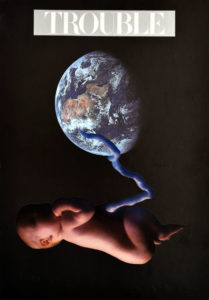
Being open-minded about art, or anything for that matter, usually means that a person is willing and able to consider or entertain something beyond the fold in a new way, and moreover, take it seriously. There is initially a certain amount of good faith involved when considering the value or importance of artwork that seems “out of step” with the prevailing cultural consensus, or art lacking some market-sanctioned approval. An open-minded curator, art dealer, or collector with good faith will follow through and reflect upon such artwork, including any comments about the artwork by the artist, thereby possibly initiating a deeper understanding or appreciation of the cognitive and/or aesthetic value of the artist’s individual style. The issue of individual style is central to the renewed importance of aesthetic experience, particularly when that experience enhances cognition, or better, reveals its inseparability from the aesthetic. In this respect, philosopher Paul Crowther contends that art is not a passive release, that the best of it contributes to a critical and ongoing engagement with self, others, and the world; and, that aesthetic experience is essential to our development and well-being as individuals and members of society: “Aesthetic experience invites broader questions that can develop more sustained critical consideration of who and what we are in personal and collective terms, and in our relationship to Being.”1 A lot of art with a political intent involves such questions, and yet, much of it often falls flat because it fails to fully develop a relationship to Being. Very often this amounts to art that might appease and serve ideological (and economic) interests that run counter to a more thoroughgoing progressive outlook. This leads Crowther to conclude something important about the neutralization of political art by the forces of global consumerism and how to counteract this: “We now see that, in the context of such consumerism, it is the commitment to art and second reflection upon it, as such, that is of more effective political significance. Through it, we achieve self-becoming that resists and criticizes the banalities of the consumerized world.”2 There is much optimism in Crowther’s conclusion, insofar as it speaks to a deep faith in the individual artist and cultural change. It is a position that has obvious political implications, given that it extols the critical importance of the individual artist and his or her role in cultural change, a role qualified by Crowther’s term “critical agent,” making clear that an artist can maintain real independence and develop as an individual while also making timely contributions as an engaged member of society. What is needed is a deeper sense of the value and meaning of art in relation to society and politics; it is a human need that underpins social awareness and is only effective by virtue of sharing a personal understanding and/or experience of social issues, an understanding and/or experience that people can relate to intimately. Cognitive aesthetic approaches to artmaking enlivened by the artist’s unique style can bridge the divide between individual and collective interests, particularly where political art is concerned.
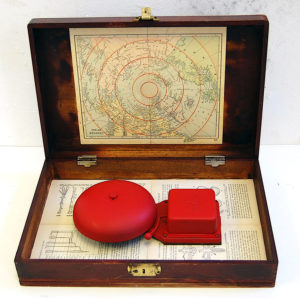
Artists are a contentious lot and often downplay or deny that politics has any bearing on art and art making. Other artists fully accept that art is political and regard art as a necessary form of political engagement. I have reservations with those who would extrapolate from Thomas Piketty when he states that everyone is political in their own way, and then assumes that all art is political. My discomfort with that assumption essentially involves the possibility of a reduction of art to politics, and, as an artist, I believe that there is much more to art than this, or to paraphrase Walter Benjamin: “An artwork can only be ‘politically correct’ when it is artistically correct.” This suggests a deeper understanding of the political nature of art, an understanding that takes the way a work is made into account. If an artwork merely parrots a message, however pressing and timely, without also changing the way the work is created in relation to established idioms, for example, by modifying or enhancing existing techniques and/or methods, then the work becomes little more than a shallow form of propaganda. As mere propaganda it forgoes the radical potential of art to disrupt the status quo in more than superficial terms.
Many artists feel the need to speak out unequivocally against the injustices and inequities of a socio-political and economic system in need of overhaul if not fundamental change. Many are engaged in making art in their studios and on the streets that raise awareness of a host of alarming and persistent possibilities, including the frightening collapse of participatory democracy in the United States and around the world. Some of this art is necessarily strident in its condemnation of all the ills that have contributed to this looming threat: Institutionalized racism and white supremacy, xenophobia and anti-immigration fervor, economic injustice, voter suppression, corporate corruption, among other issues long festering in the underside of the American experiment. Art with a clear political agenda along with a ramped-up political response to this threat is needed, because to paraphrase Ben Franklin when asked, upon conclusion of the Constitutional convention of 1787, what kind of government we had, he replied: “A [democracy] if [we] can keep it.” Like many others, I recognize the challenges that we face today to keep our democracy and as an older American I will do what I can to speak out as an artist, in its defense and the United States Constitution. Our First Amendment rights are of paramount importance to artists, since most artists are generally an independent lot and given to freethinking and open-mindedness. As urgent and important as it is to call for the arts to respond forcefully to the challenges facing our democracy, I cannot stress enough that we must not lose sight of something that is fundamental to our experience of art: its value as a vehicle of self-discovery beyond or in addition to its power to inform and mobilize.
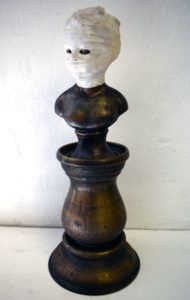
Addressing social and/or political concerns through art, particularly in concert with active protest, is an important way to exercise one’s First Amendment rights; something that art is in a unique position to accomplish. Whether through murals, poetry, performance art, or any number of means, art can express cries for democracy and justice in highly imaginative ways, grabbing people’s attention with outrage, humor, factual display, and exhortations to resist oppression and tyranny. Most artists who are also activists, provisionally or otherwise, are sincere and dedicated to both their art and the causes that they espouse. This is the case because we artists often have our fingers on the pulse of society, anticipating its perturbations, literally and figuratively. Our often-acclaimed ‘sensitivity’ is simply a matter of noticing things that others may be slow to. One of the best ways to gain some insight into the health or stability of a culture as well as its promise is to pay attention to its artists. The mainstream art world has long recognized the vision of artists in this regard and, for better or worse, capitalizes on their ability to be in the forefront of social change. However, sometimes the very recognition garnered by these artists compromises their vision, undercutting or undermining their sincerity if not political commitment. The motivations of artists are often hard to discern, but the fact is that an art of “resistance and dissent,” like anything else in a consumer society, can be co-opted and manipulated to stir the emotions of politically motivated art lovers while also making a tidy profit. The only artists perhaps above suspicion here are dedicated outdoor muralists and the like who want nothing more than to contribute something positive to their communities, often with little or no remuneration for their efforts. Their sincerity seems unquestionable, whatever their view of the function of art and its place in a free society.
Granting then that all art has a political dimension, the challenge seems to be one of deepening and then defining the nature of that dimension on an individual basis. This is a challenge because human beings, artists included, are not politically pure (or purely political). Furthermore, no art (or artist) is immune to exploitation or manipulation by either the art world or socio-political forces that would enlist art for its own narrow purposes. One might argue that this should be of no concern to the artist; once the work is made, shown and/or sold, its fate is out of the artist’s hands. While this is true, the expectations placed on the artist in this case, whether one is a politically motivated outdoor muralist or an artist represented by a commercial gallery, can be sizable. Very often what is at stake is the artist’s autonomy, a sense of independence that can be slowly eroded by either political or economic pressure, or both. In short, the value of art as a vehicle of self-discovery can atrophy under such circumstances. Artists then risk becoming mere instruments, either propagandists echoing political talking points or producers of high-end commodities, or again, more disturbingly, some combination of the two. When making or engaging with art, its social and/or political dimension should never be the primary consideration, for either the artist or the viewer or reader. When political and/or economic interests diminish or displace the cognitive aesthetic of art, it undermines the essential purpose of art: To explore the possibility of seeing the world and ourselves anew without restrictions of any kind. Exploratory art in this sense that also raises awareness of social and political issues, provided it hasn’t been coopted for political and/or economic reasons, is not only possible but is more effective because of its independence.
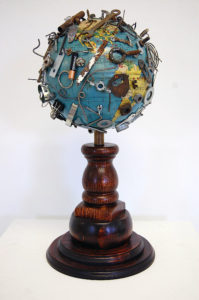
The political dimension of effective or engaging art has everything to do with the cognitive aesthetic that it embodies, in contrast to some of the “socially aware” art promoted by the commercial gallery system, art that usually employs the ossified structures of established idioms to convey a message. While most contemporary art implicitly embodies aesthetic ideas of one sort or another, often of a socio-political nature, a distinction needs to be made between this art and art that might also do this but at the same time puts a unique or individual spin on the means, or how the work is made. It bears mentioning that art consciously designed as propaganda, however laudable, has an obvious cognitive function as such, although that function rarely rises above that of a means to an end. Art meant to instruct along political lines supports instrumental views that often serve institutional careers more than contributing to a deeper understanding or appreciation of the vital exploratory and intersubjective importance of art in a society dominated by a consumerist ethic. On the face of it, intersubjectivity is about sharing subjective states or individual capacities within a social domain. I believe that the essence of intersubjectivity involves the embodied subject: all humans have bodies that are the foundation of awareness, and perhaps ultimately consciousness itself. Intersubjectivity is the relation or intersection between the cognitive capacities of individuals; capacities made possible by the fact that our thoughts, feelings, and imaginings are intertwined and ultimately inseparable from our bodily experience. Consciousness seems to arise from our bodily experience, to regard it in some manner as disembodied is to revive Descartes res cogitans (thought regarded as a “substance” independent of matter); an illusory notion that maintains that mind and body are distinct, and that the former could exist without the latter (a notion that is welcomed by most advocates of artificial intelligence). This ironic mindlessness is at best a distraction from a fundamental experience of being a body that thinks and feels, a way of being that is the enduring ground of intersubjectivity. Inter-subjectivity is not simply a matter of agreement between people, it’s far more basic. It involves our shared way, as sentient beings, of knowing and understanding ourselves and the world, a sense of embodiment regardless of our personal differences. Our embodied cognitive capacities are the essential bridge between self and others. Art can play a vital role in bringing more awareness to this and provide important ways of seeing the world and oneself in a new light.
Radical change, in social, political, and/or economic terms, begins, as any reasonably intelligent person knows, with a change of consciousness, which is different from a change in consciousness. Sidestepping the intractable problem of “consciousness in itself,” which seems to involve consciousness of itself, or self-consciousness, as such (and this suggests that it is futile to approach consciousness as a disembodied state); it is still possible to speak in practical or epistemological terms about how consciousness evolves. A change of consciousness involves a transformation in how we think about, perceive, and imagine the world and ourselves. It is a process that usually takes some time, often the result of years of experience and self-reflection. A change in consciousness, on the other hand, does not entail a change in the viewpoints that often drive our thinking, perceiving, and imagining the world and ourselves. The former is more radical because everything has changed, including one’s perspective or outlook. Art that enables or prompts a change of consciousness brings with it the potential of seeing the world and oneself anew, for artist and audience alike. Seeing things in a fresh light indicates the emergence of a new Being, entailing a greater awareness of one’s humanity and the humanity of others, and perhaps above all, a sense of the complexity of what it means to be human. Such art might at first seem blind or indifferent to social and/or political issues, leading to the notion that the artist is either working in a detached state or in a position of relative privilege, or both. Sometimes these assumptions are warranted, but we should not dismiss the artist and his or her art as inconsequential on that account. Art that contributes to a change of consciousness in some often goes unrecognized or is under-appreciated by others precisely because it fails to penetrate layers of preconceptions about art and fully realize its potential to be more deeply engaging. It might be argued that this is the fault of the art; that its failure to penetrate “layers of preconceptions about art” is an indication of the art’s aesthetic and/or cognitive weakness. Such a criticism ignores the basic meaning of the term “preconception:” an opinion or conception of something prior to actual knowledge or experience of it, in short, a prejudice. Not to put too fine a point on it: To substitute power where knowledge and /or experience is needed to fully appreciate and understand a work of art, always forecloses deep engagement with it. This, of course, is a political problem. Finely articulated art and elucidation by the artist as to the significance of his or her work can help, but to affect a lasting change of consciousness requires something more. It may be nothing more than the passage of time and the slowing down of a life to think, feel and see anew, thus lengthening one’s attention span. In other words, the key to a transformation of consciousness may begin in our mature ability to reflect on the nature of our own minds and the reason for our being. Some may see this approach to art as solipsistic or a distraction from the pressing social and/or political issues of the day. However, when art deepens a sense of our humanity, we are restored as individuals and social beings. What good is social and political change if we cannot change ourselves in some fundamental sense?
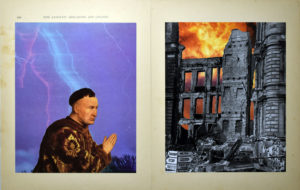
The focus on art as means to an end, either to present political views presumably in opposition to the status quo, or as just another career opportunity for institutional players, or worse, both, is a disservice to the intrinsic value of art and all those concerned with the loss of a vital, uplifting culture, not only many artists, but also, I dare say a large segment of the art viewing public. Art needs to be about more than elitist posturing, or paying lip service to social or political issues, or pandering to the latest fashion. Art should connect with people in ways that are cognitively and aesthetically engaging; the best of it brings pleasure in recognizing the unique ways that artists put things together and bring ideas to life.
Whether it has overt political content or not, art that has intersubjective potential can be deeply radical. Such art will not, in principle, strive to be a critique of the status quo, this is not its mission. The point is that art out of step with the prevailing cultural consensus while also revealing intersubjective potential is often deeply antithetical to the values of the status quo by virtue of its eclecticism and/or individual style. It is often art that is inherently oppositional. If the work is stylistically unique, expressing an individual viewpoint, then this inherent quality does not preclude such art from also taking a stand on the social and/or political issues of the day. In fact, it may be that such art is better positioned to make a lasting impression and is therefore more effective in advancing social and/or political viewpoints that might otherwise be taken for granted.
I will close with an incident in the early 1970s, when as a young political activist. I joined a picket line in Oakland, California organized by a radical leftist group protesting the racist practices of a local supermarket. I was an erstwhile poet and member of the Vietnam Veterans against the War (V.V.A.W.) picketing in support of Venceremos, a revolutionary organization in solidarity with Cuba. In those days I struggled to balance my political activism with art making and the writing of poetry, much of it that was not overtly political. I was keenly interested in language from a Conceptual art perspective and was writing poetry with a decidedly “subjective” and metaphysical orientation. I remember attempting to share a couple of my poems with one of the leaders of Venceremos and his icy response to them, which resonates with me to this day. To paraphrase, he said: “This poetry is not revolutionary and therefore irrelevant in terms of our struggle.” I was both stunned and disheartened by his response, and clearly naïve. It was an instructive encounter with ideological rigidity, a malady that infects minds on both ends of the political spectrum. Art then, as now, is destroyed when reduced to mere propaganda. The struggle for justice, equality, and human dignity must always encompass a broad array of aspirations that might contribute to the betterment of humanity. As some believe, perhaps all art is, broadly speaking, political. But the lesson that I learned and subsequently rejected that day on the picket line: When art fails to make a politically revolutionary (or socially committed) statement, it is part of the problem and not the solution, remains one of the defining moments of my artistic life. I am no less progressive in my political views today than I was in the early 1970s. What has changed is the view that if all art is essentially political, then perhaps we need a fresh understanding of politics in relation to art.
Footnotes:
1 Crowther, Paul. The Aesthetics of Self-Becoming, How Art Forms Empower (London: Routledge, 2019, p. 151)
2 Ibid., 151
